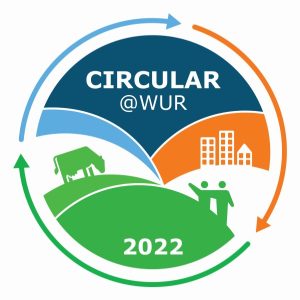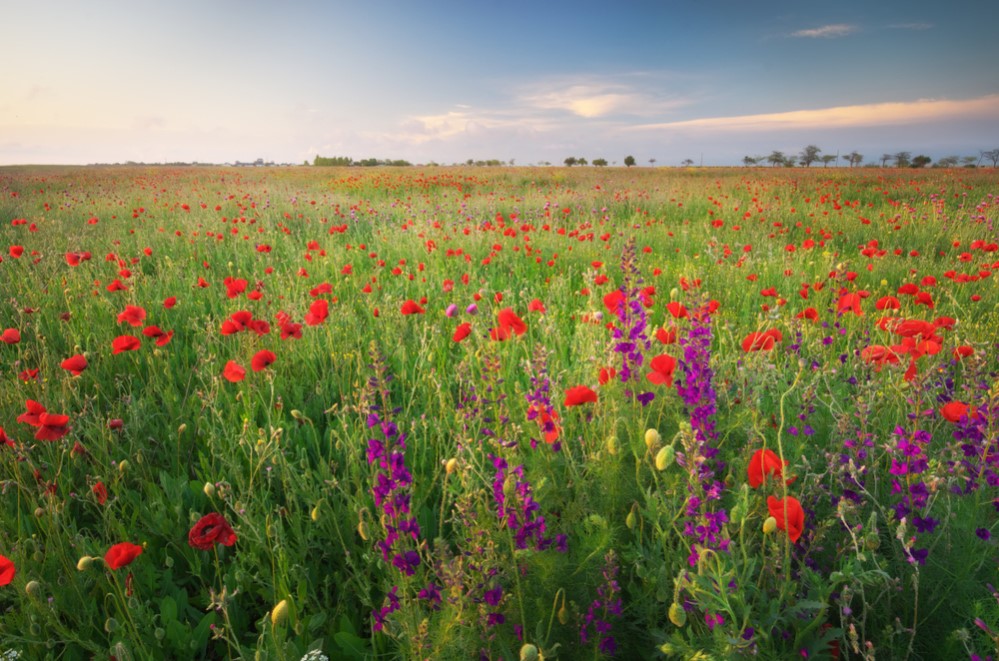My farm in 2050
This blog was written by Daan Verstand, Trond Selnes and Seyda Ozkan-Gulzari. It is the third part of a series on a circular and climate neutral Europe in 2050.
It is 2050 and Europe is completely circular and climate-neutral. What do you see around you? That is the question we spread within WUR. Based on all the received input, we wrote four inspiring future stories about how Europe could look in 2050. The stories are written from an I perspective to present a future and not the future. The topics of the stories are urban areas, agricultural areas, forest and nature areas and water bodies. This work is part of the One Wageningen challenge to develop a climate knowledge agenda for WUR and is funded by the KB programme Circular and Climate neutral. In this series of blogs, we want to share these stories with you. This is the third story in this series.
I am a farmer. In 2020, I took over the business from my parents. The following years I decided that business-as-usual was no longer suitable. Mono-cultivation and high input systems were not suitable to adapt to climate change and to reduce the greenhouse gas emissions. We were confronted with the reality that earth surface was warming, and I had to do my share.
I first started with re-designing the practices on the farm. I intended to become more climate-smart. So instead of only cultivating grains and potatoes, I started operating a diverse farming system with a mix of crop and livestock. So, I now have cows and chickens on the farm. The advantage of such a diverse system lies in its ability in adapting to climate change. And you know what I mean by climate change right? We have frequent heat waves, droughts and extreme rainfall.
By diversifying, I spread the risk. I have integrated agroforestry on my land, allocating a part of it for nut and fruit trees for us and our customers, and fodder trees for the cows to nibble. The chickens scavenge freely underneath the trees and utilise the unavoidable household waste (which we have very little). Agroforestry helped me find alternative sources of protein for my livestock. These practices were also more in line with my aim to improve animal health and welfare.
Circularity became a way of living
Circular options followed. Circularity was not just a concept, but became a way of life for us. How? Less raw materials, valorising the biomass, and paying more attention to the quality of soil, water and air. For example, I use manure and human waste for fertilising my crops, which improved the nutrient use efficiency and reduced the nitrous oxide emissions. The composition of the animal feed, with easy-to-produce alternative protein sources and with the optimum use of land and crop residues, also reduced methane emissions from my cows.
How do I know this? Since my farm is part of a central monitoring system that uses data from all farms in the network in Europe, I can monitor the greenhouse gas emissions of my farm. My neighbour farmer Nick and his wife Chloe organise workshops to keep us up to date with all the new information and knowledge emerging on farming systems.
Cross-border networks of farmers
Speaking of Nick and Chloe, I also work together with other neighbouring farms. We check and align production based on the demand in our region. This network of farmers crosses the borders of all European countries. Cross-border coordination ensures that livestock and crops remain healthy and that we never exceed carrying capacity of land and water to produce food. We have a system by which we exchange raw materials and biomass such as manure to improve efficiency. It is like second-hand shopping or a garage sale.
To optimize use of manure, arable, livestock and horticulture areas are positioned strategically. This does not only happen in the Netherlands! Grasslands and marginal lands are restored and used to feed animals throughout Europe. New grazing methods and forage systems developed. They contribute to carbon sequestration, biodiversity and landscape restoration. Soil and water are essential components for us farmers in this erratic climate, so we ensure that they remain of excellent quality. To do that, we use the principles of precision agriculture, such as fertiliser management. Precision farming is evolving throughout Europe and the rest of the world, often with Dutch know-how.
Hydrogen as fuel
My tractors and other farming machinery and tools like robots use hydrogen produced from wind or solar energy. This way I reduced my carbon dioxide emissions from fossil fuel use. Thanks to the solar panels on the roofs of my stables, I have even become an energy supplier. There is also a biogas plant on my site. Would you have imagined in 2020 that the production, processing and transport of products would use only renewable energy in the future? Yes, it is happening! Since we did not add further carbon dioxide from fossil fuel use in the atmosphere, we were able keep the global temperature rise below 1.5 degrees Celsius. This happened because we acted together!
You may wonder whether all this required investment. You bet it did! I had some reserves because farmers all over Europe have had a healthy, predictable and consistent income with long-term contracts to ensure stability. These contracts are necessary, because it is not easy to get good harvests in such an unpredictable climate. Of course, we have multiple sources of income, payment for carbon sequestration and water retention and a well-functioning climate policy. Penalties and rewards are part of the finance mechanism.
Social farming
Our consumers pay a fair price for our products. Just like me, they wanted to change their dietary preferences. There was not one right approach or one right practice to get there. We had to approach all possibilities with a curious mind. Dialogues are in place in the entire supply chain to make transparent and informed decisions on how to cope with climate change. Citizens respect farmers because of their efforts and the way we are connected to produce food within the planetary boundaries. Social farming is a thing! For example, students, people with disabilities and even office workers from the cities regularly come to work on my farm.
These systems are the result of co-design, co-build, co-implement and co-evaluating among farmers, citizens and policy makers. Circular, climate-resilient and nature-based solutions were the best decisions of early 2020s, we are still harvesting the fruits of now.
 At the Circular@WUR conference in April 2022, WUR will provide an overview of the latest knowledge about a circular, biobased society. Participants can experience the circular challenge in masterclasses and gain inspiration by visiting the most innovative circular companies in the Netherlands. Relevant, impactful keynote speakers give their inspiring vision. Imke de Boer and Hans van Meijl from WUR, and guest speakers such as Jaqueline Cramer (Utrecht Sustainability Institute), Helmut Haberl (University of Natural Resources and Life Sciences Austria) and Bas Eickhout (Member of the European Parliament on behalf of the Green Left, part of the European Green Party). Read more.
At the Circular@WUR conference in April 2022, WUR will provide an overview of the latest knowledge about a circular, biobased society. Participants can experience the circular challenge in masterclasses and gain inspiration by visiting the most innovative circular companies in the Netherlands. Relevant, impactful keynote speakers give their inspiring vision. Imke de Boer and Hans van Meijl from WUR, and guest speakers such as Jaqueline Cramer (Utrecht Sustainability Institute), Helmut Haberl (University of Natural Resources and Life Sciences Austria) and Bas Eickhout (Member of the European Parliament on behalf of the Green Left, part of the European Green Party). Read more.

